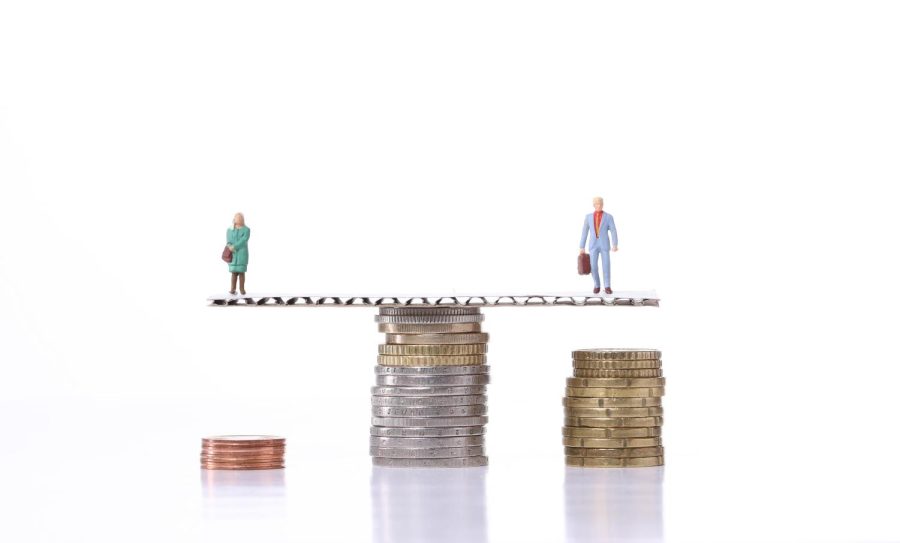The Reality of the Wage Gap
While we may be approaching equal pay for equal work, we have yet to offer equal opportunity for men and women in the workforce.
April 24, 2022
When the topic of wage gap rises to conversation, the initial instinct of some people is to scoff and roll their eyes, but surprise! The wage gap is still very real.
Studies track the wage gap between all demographics through controlled and uncontrolled groups. One study in particular by Payscale tracks the state of the gender pay gap for each year.
The controlled pay gap is defined by “equal pay for equal work”, controlled wages meaning the comparison of the wages for the same job and position. This rate is at .99 cents to each dollar a man makes. The difference in these rates over time accumulates towards an enormous disparity in earnings.
Payscale lists the top 20 jobs with the greatest gender pay gaps. At the top lies the difference in pay for waiters and waitresses, where, under the controlled wage gap, women earn about .90 cents to a man’s dollar. Falling to number four on the list, the difference in earnings between male and female physicians amounts to a grand total of 30,000 dollars.
The absolutely detrimental wage gap lies in the uncontrolled gender pay gap. While it may not be a direct comparison of the earnings for the same job positions, the uncontrolled pay gap is observed in the average salaries for women compared to men overall, explained better as the “opportunity pay gap”. Uncontrolled, women earn around .82 cents to every man’s dollar.
Because the majority of studies only go so far as to prove the controlled wage gap, this is the basic information people consider when arguing against the entire existence of a wage gap as a whole. The disparity between the lifetime earnings between men and women expands to a much broader issue than just a wage gap between the same job position. It becomes a question of maternity, age, job level, promotions, race, industry, opportunity, and far more; all of which factor into a woman’s wage relative to her white male counterparts.
To fully understand what the wage gap really means, we have to look at the jobs that are offered to women, the traditionally patriarchal “homemakers” of the family, not the breadwinners. Men are consistently seen working higher paying jobs. In other words, the jobs women have historically occupied measure the value women have to society, a value which is still far from equal to the value men possess today.
Payscale offers solutions where members can work to solve the problem of the wage gap by signing up for webinars where experts “discuss key findings from the report, ways you can help close the race and gender pay gaps, and how you can make strides towards pay equity.”


